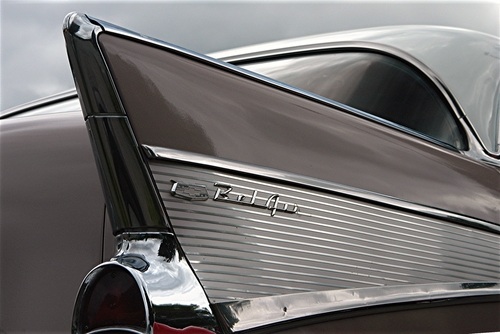The pathway that led to much of today’s less-than-sustainable manufacturing models
The following series on planned obsolescence is taken from a book I am presently writing, “The Growth Quotient.”
Give credit to Alfred P. Sloan, Jr., president of General Motors, for envisioning, then creating a bonafide modern-day economic fuel injector that could propel growth like never before imagined. Here was the birth of what came to be known as planned obsolescence.

His thinking, while simple in concept, was absolutely radical, especially during the hard times of the Great Depression. If at the beginning of a factory year, General Motors were to introduce new products that might be perceived as upgrades for car-driving consumers, and if these upgrades represented something consumers might feel were essential as they climbed the economic ladder – something they needed to buy – then Sloan and his design engineers would have bet on the winning racehorse.
Unlike competitor Henry Ford, who saw little reason to change his black Model-T, the forward-thinking Sloan saw change as an economic driver that could benefit his company. Sloan may have lacked the engineering genius to invent the prototype car, but he was a marketing and manufacturing visionary.
Cynical types may argue that Sloan was no seer, that he simply walked down a consumer-driven pathway which had already yielded abundant fruit for the fashion industry, that he was no different than any fashion-hawking evangelist might be, curtseying to his intoxicated audience and blowing kisses, only to return to the dressing room, laden with new styles, new colors, and new prices.
Whatever the perception, Sloan and this fashion-forward style for car manufacturing laid the groundwork for GM to become the world’s largest automotive manufacturer for over half a century. In his autobiography, “My Years With General Motors,” he penned this thought “The changes in the new model should be so novel and attractive as to create demand . . . and a certain amount of dissatisfaction with past models as compared with the new one.”
With the end of World War II, other automobile industry insiders soon found the notion of planning new products around obsolete ones to be a palpable business model. Among them was Brooks Stevens, the renowned Milwaukee industrial designer specializing in everything from automobiles to appliances, and point-of-sale strategies. Stevens wholeheartedly embraced the concept of products becoming obsolete. This pragmatic man was thinking of the greater industrial good – or revenue – that could be generated through such a practice.
At a 1954 advertising conference, Stevens gave the speech heard round the world when he trumpeted the meaning and value of planned obsolescence. To this industrial designer, the practice went something like this: “Instilling in the buyer the desire to own something a little newer, a little better, a little sooner than is necessary.”
No doubt this definition may have flickered brilliantly for industrial designers and manufacturers worldwide, especially following the rationing shortages of World War II. There was a brand-new world out there, ready for the taking. While others saw Stevens’ words as anathema, believing that products were meant to be designed and built for a lifetime. Their voice was small, though.
Next: Whether it was smart or not, by the late 1950s, planned obsolescence had become a practice many people understood, even if it might sometimes be contrary to the idea of long-lasting product quality.
Photo: 1957 Chevy BelAir from Shutterstock
About this report: The following series on planned obsolescence is taken from a book Glenn Meyers presently writing, “The Growth Quotient.” Here is an archive of these posts:
- The Greatest Invention: Planned Obsolescence – Part 1
- The Freight Train for Planned Obsolescence Jumps to High-Speed Tracks – Part 2
- Moore’s Law & Planned Obsolescence Construct a Technology Traffic Jam: Part 3
- Planned Obsolescence & the Bubble That Burst: Part 4
- Unplanned Obsolescence & the Texas Back Roads: Part 5
- Planned Obsolescence and the Bic Effect – Part 6
- The Evolution of Planned Obsolescence: Innovation’s Litter – Part 7


But economists played along by not talking about Net National Product and Demand Side Depreciation.
http://toxicdrums.com/economic-wargames-by-dal-timgar.html
This article is nothing more than sensationalism. The true meaning of planned obsolescence is “designed to fail”. GM has been designing their vehicles to rust and fall to pieces for many decades. Ford designs their parts to fail one by one. So you could say a person goes out and buys a vehicles from these companies, they will be nickel and dimed to death from day one. And some people will be killed due to the design flaws. But no matter. Both Ford and GM will gladly strike up a deal with the lawsuits. Just pay out $20M taken out of the $400M they earned. PROFITS! They don’t care if you live or die. Money Money Money.
People seriously need to wake up an STOP enabling companies like Ford and Gm. They are a disgrace to America. Toyota is the only “domestic” brand we have left that actually tries to build things to last. Reliability exists with them. It’s only a marketing tool with Ford and Gm. How many people have to keep dying until steps are taken to destroy those companies? Make them fall once and for all.